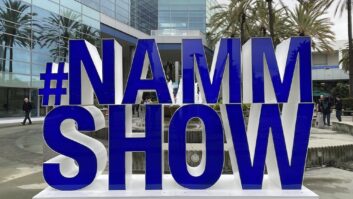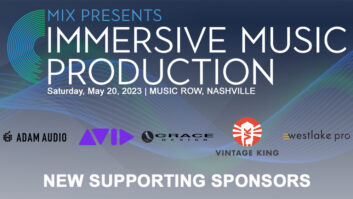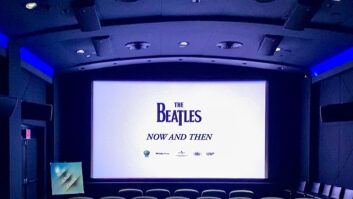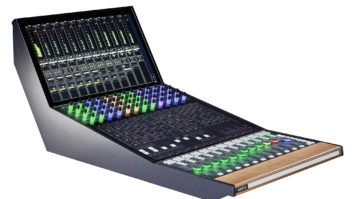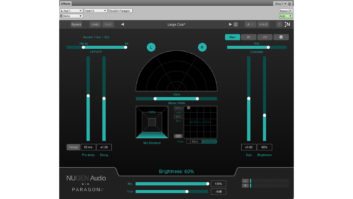Craig Anderton

Two recent events underscore changes in the world of digital audio. The first is the end of licensing for MP3 data compression (or more accurately, “data omission”), and the second is the news that Sony is installing six new lathes in Japan (and hiring people with vinyl expertise) in preparation for mainstream vinyl releases.
Regarding the former, consider how much time and effort has been expended on software for encoding and decoding lossy audio. Although digital audio was initially promoted with the promise of “perfect sound forever,” consumers embraced data compression so they could fit more files on their portable players and phones (and “share” files faster). Of course the MP3 protocol drove this growth, but Microsoft developed the Windows Media Audio lossy protocol while Apple came up with its own format, AAC. Meanwhile there was the open source Ogg Vorbis option (still considered by many to be the best) and Sony’s ATRAC.
I believe MP3 became dominant because it was pretty much first to market—once you’d ripped all your CDs to MP3, you weren’t going to do the same with other formats. It became a de facto standard in a world of proprietary formats.
However, with memory becoming ever-cheaper, bandwidth ever wider and streaming available without having to store data permanently, data compression started to lose its relevance. Thus began the quest for lossless codecs, so now we have FLAC (which Microsoft adopted for Windows 10, realizing Windows Media Audio was doomed) and Apple’s ALCA (Apple Lossless Compression Algorithm, which had been proprietary but went open source and license-free in 2011). FLAC has a lot going for it: It’s open-source, royalty-free, supports album art and metadata tags, and has been around long enough to be stable across platforms. The catch is that being lossless, it typically reduces size by around half (about same as ALAC), so it saves a lot less space than lossy algorithms.
ALAC decoders and encoders are available in open-source libraries, and ALAC is reasonably well-supported outside the Apple ecosystem. It handles up to 8 channels of 32-bit audio with sample rates up to 384 kHz (FLAC tops out at 24 bits, but can have sampling rates up to 655.35 kHz). However ALAC is the only lossless data-reducing format supported by iTunes and iOS devices, which creates a barrier to more universal FLAC support.
Of course, we still have the “old standby”—uncompressed files. But the industry wants us to believe that 44.1 kHz / 16-bit isn’t enough, and we need 96 kHz / 24-bit or even higher. So what is the audio file format of the future?
Well, it won’t be ATRAC, Windows Media Audio, Ogg Vorbis, ATRAC, or Speex. The MP3 format will hang on due to being ubiquitous, but will fade…as will AAC. Then the question becomes whether eventually, the 50 percent size reduction with lossless compression will be sufficiently unimportant for manufacturers to throw in the towel, support WAV and AIFF, and be done with it.
But there are some potential monkey wrenches—like multi-channel support, and “HD” audio. If these become important to consumers, we’re back to needing storage and bandwidth. And although online bandwidth is improving, you still see buffering from time to time—which no one likes. Furthermore, the effects of reversing net neutrality have yet to be determined. If the dire predictions of “slow lanes” for smaller companies comes true, streaming bandwidth may again become an issue.
Then there’s consumer preference. Despite efforts to convince the public that high resolution is necessary, products accommodating either higher-resolution PCM or Direct Stream Digital have simply not gotten traction. Also, surround has taken hold only in home video systems. There’s little content available for audio-only media, and given how many people listen on headphones, it seems that stereo will continue to be the entrenched audio format for quite some time—and consumers see no need to go much beyond 44.1 kHz / 16-bit (especially if they were raised on MP3s).
So I suspect it’s going to come down to six “standards”—WAV and AIFF for uncompressed data, FLAC and ALAC for lossless compression, and MP3 and AAC for lossy compression. And what about the vinyl resurgence? It will be a niche, high-margin medium that will continue to have a flurry of activity but ultimately, there’s a reason why people replaced their vinyl with CDs—and digital audio quality has come a long way since then.
Author/Musician Craig Anderton’s latest album, Simplicity, is now streaming at craiganderton.com and youtube.com/thecraiganderton.
